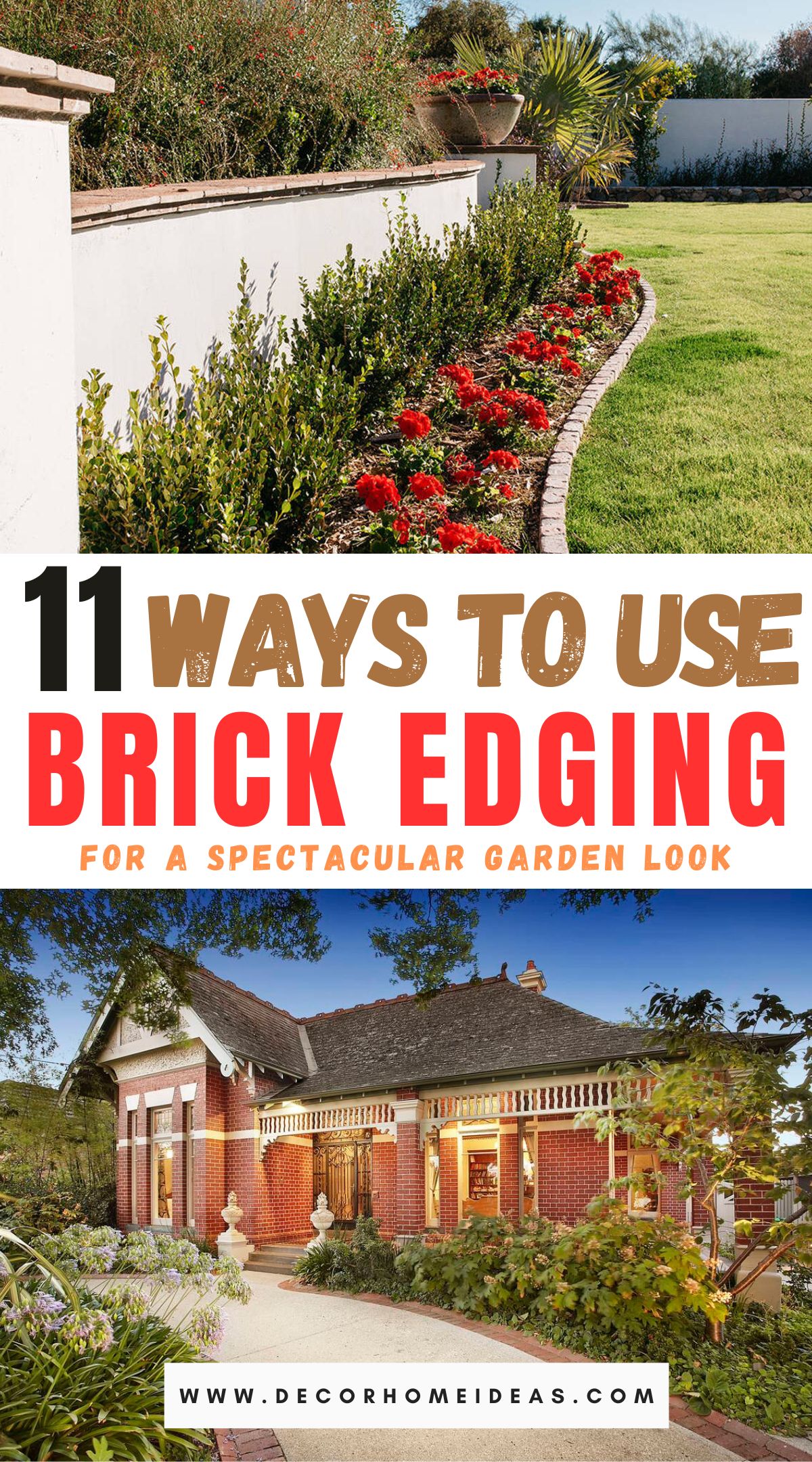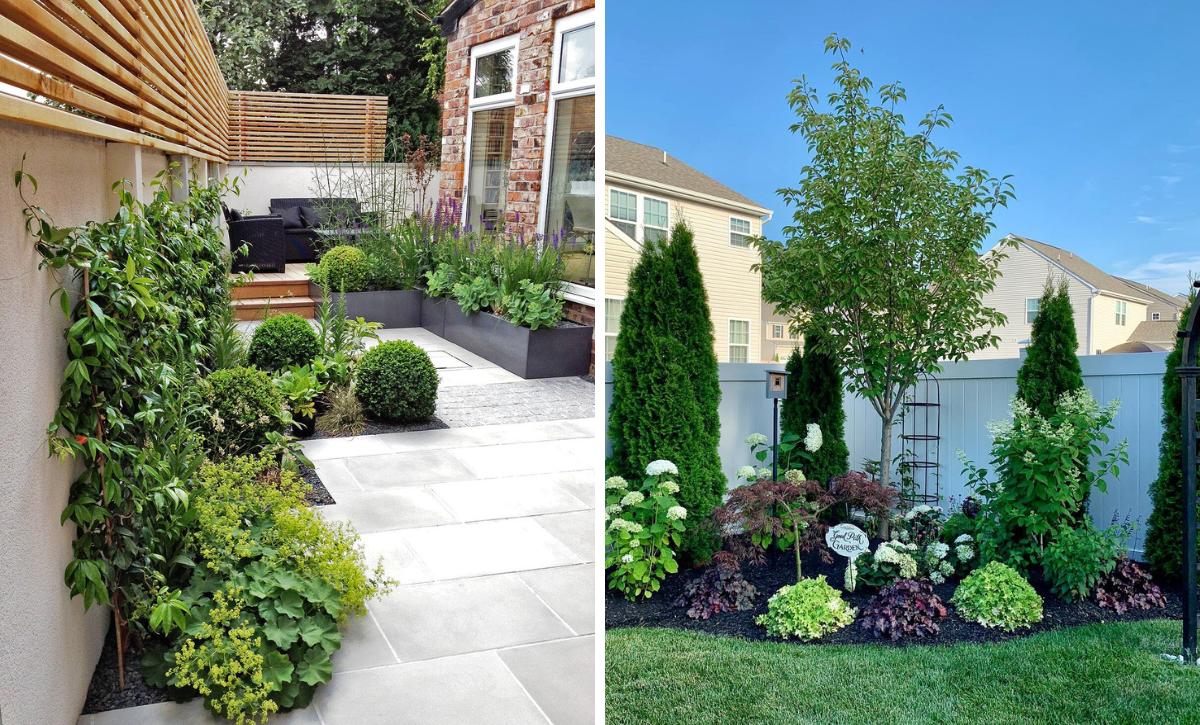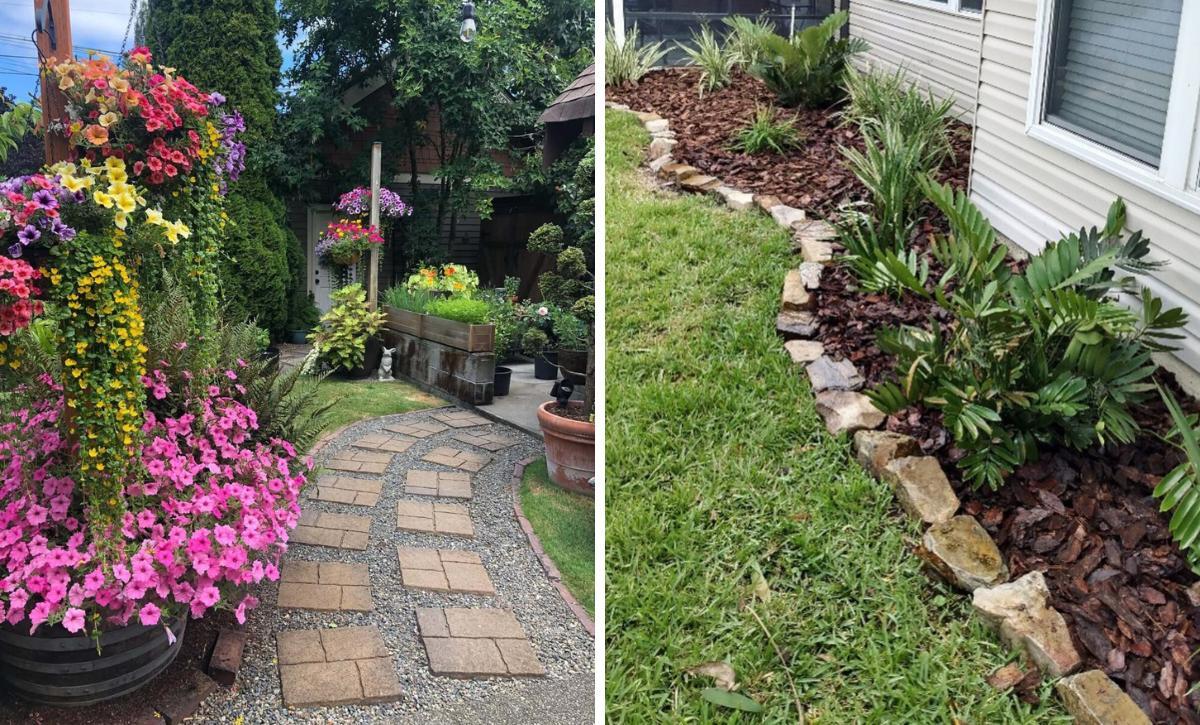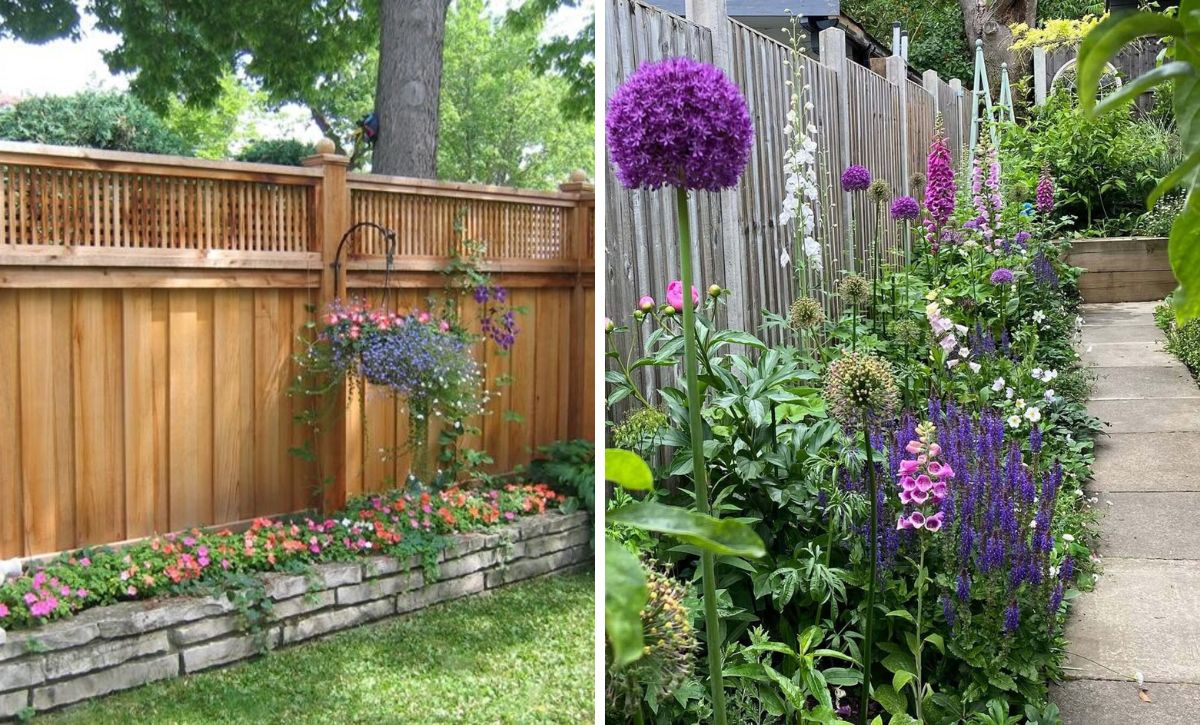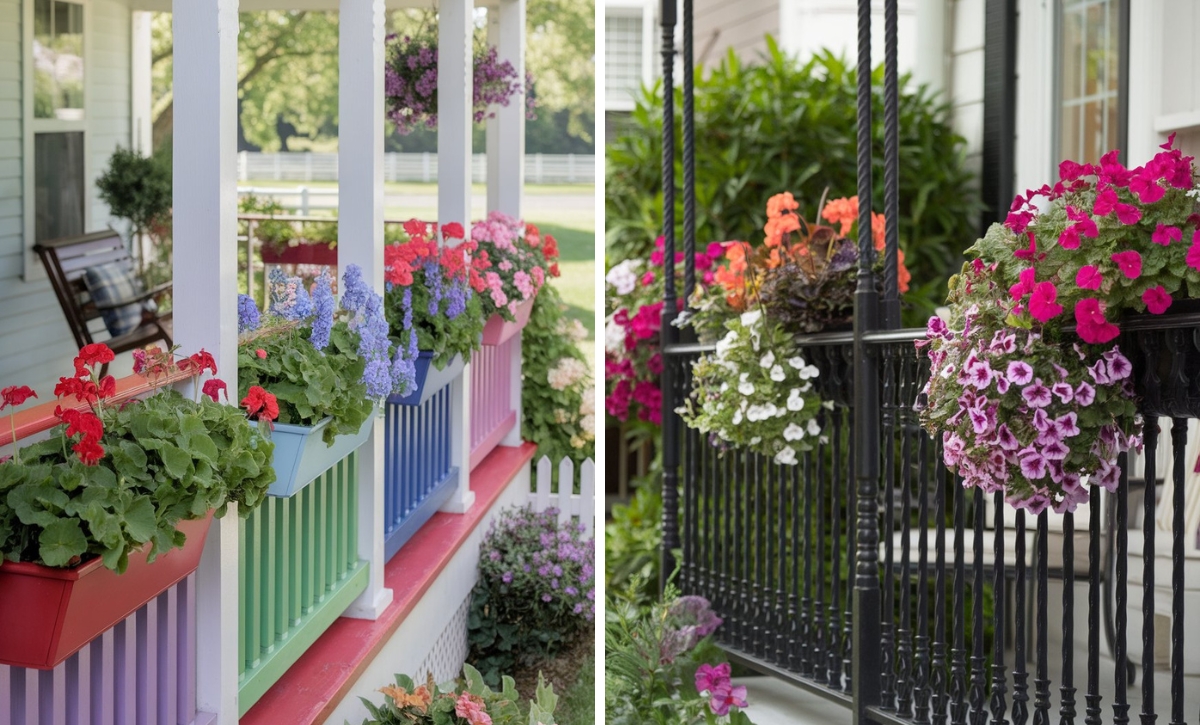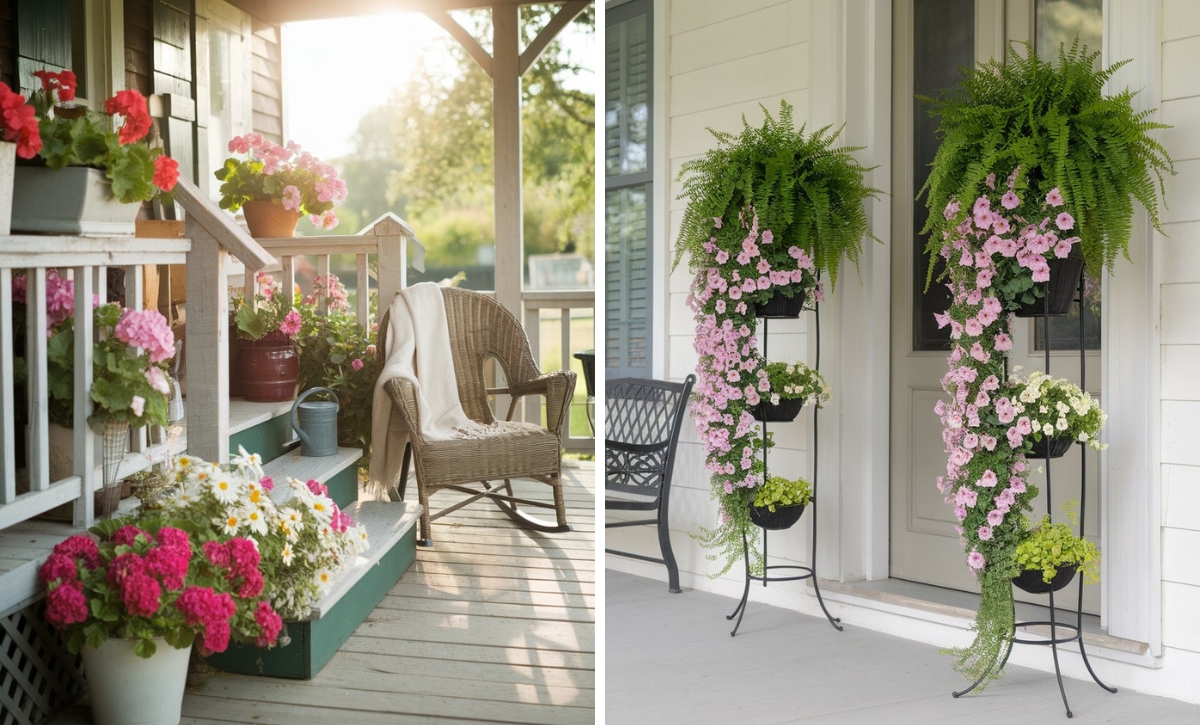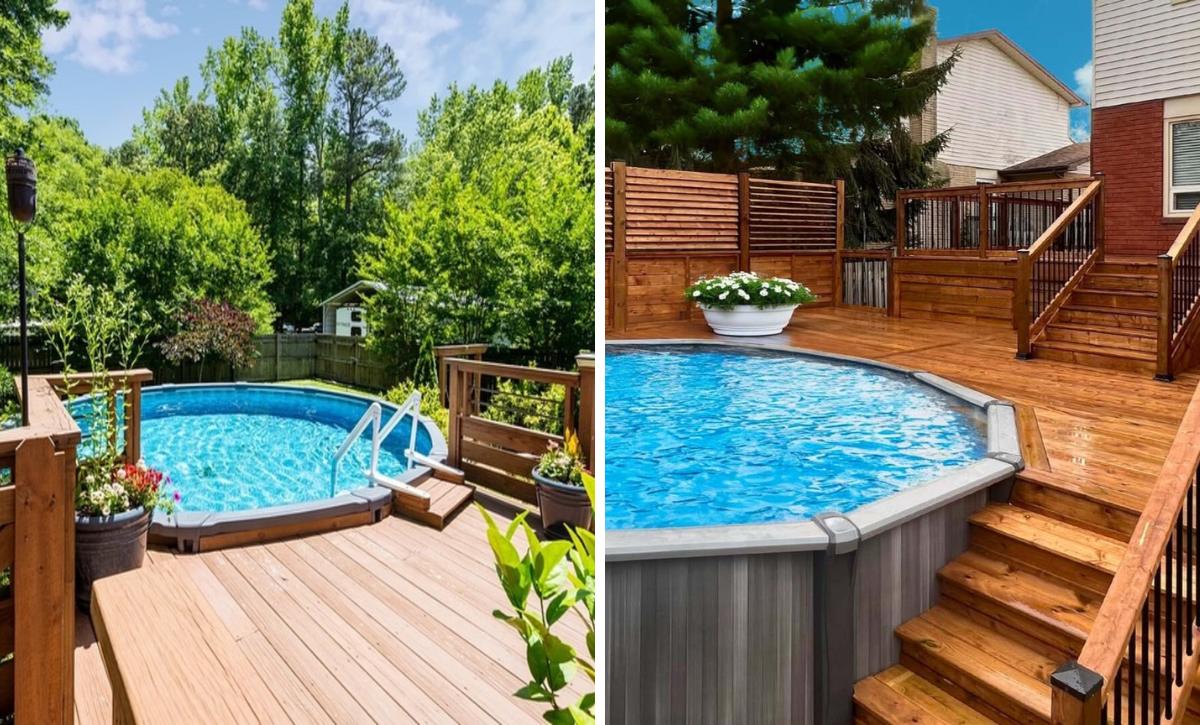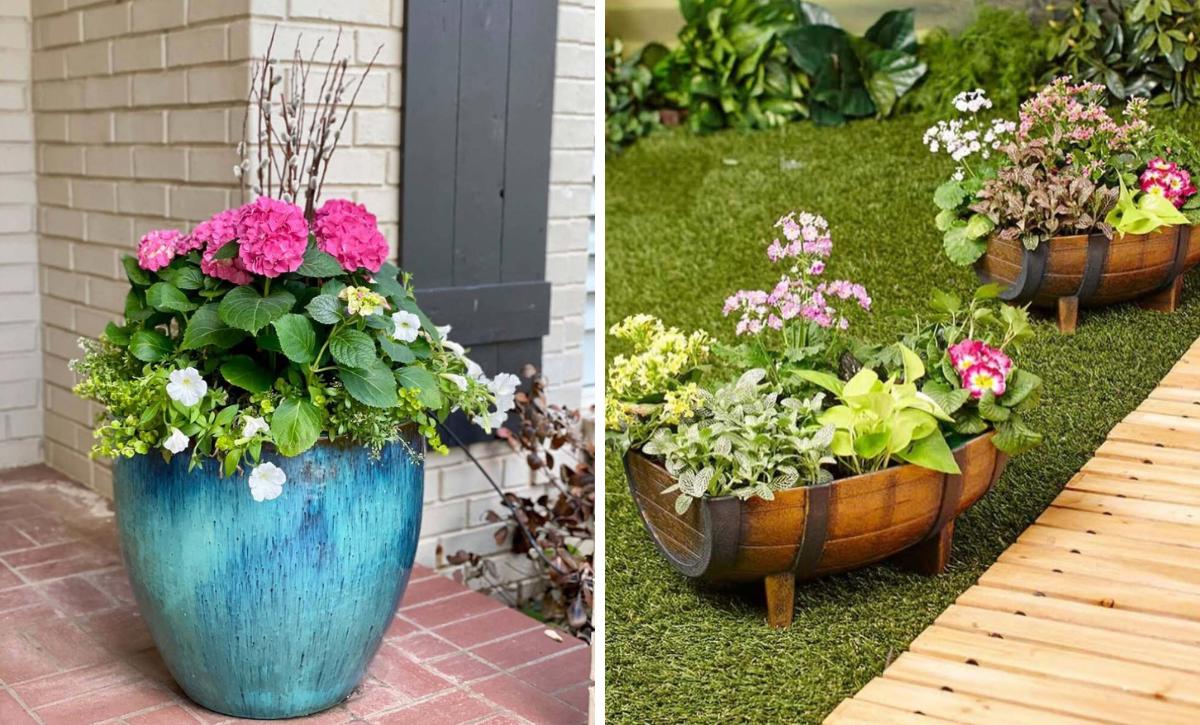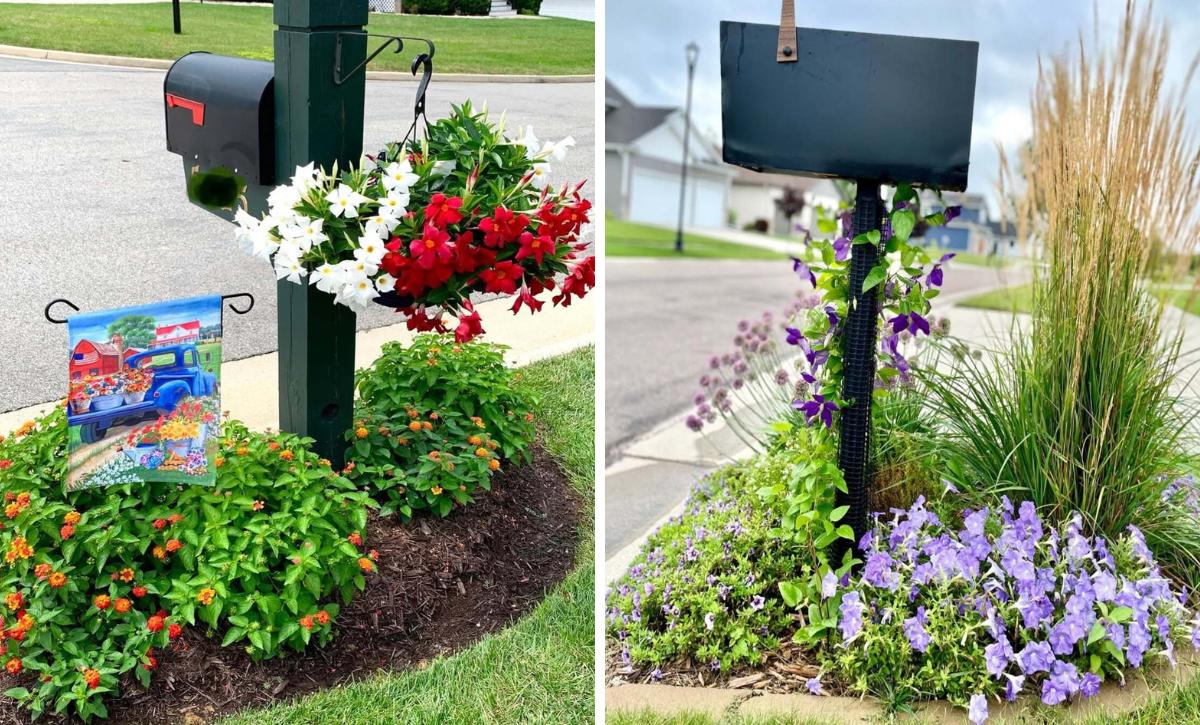Enhance your garden’s appearance with an edging made of bricks.
Garden edging is important to outline this beautiful natural feature and differentiate it from the rest of the outdoors.
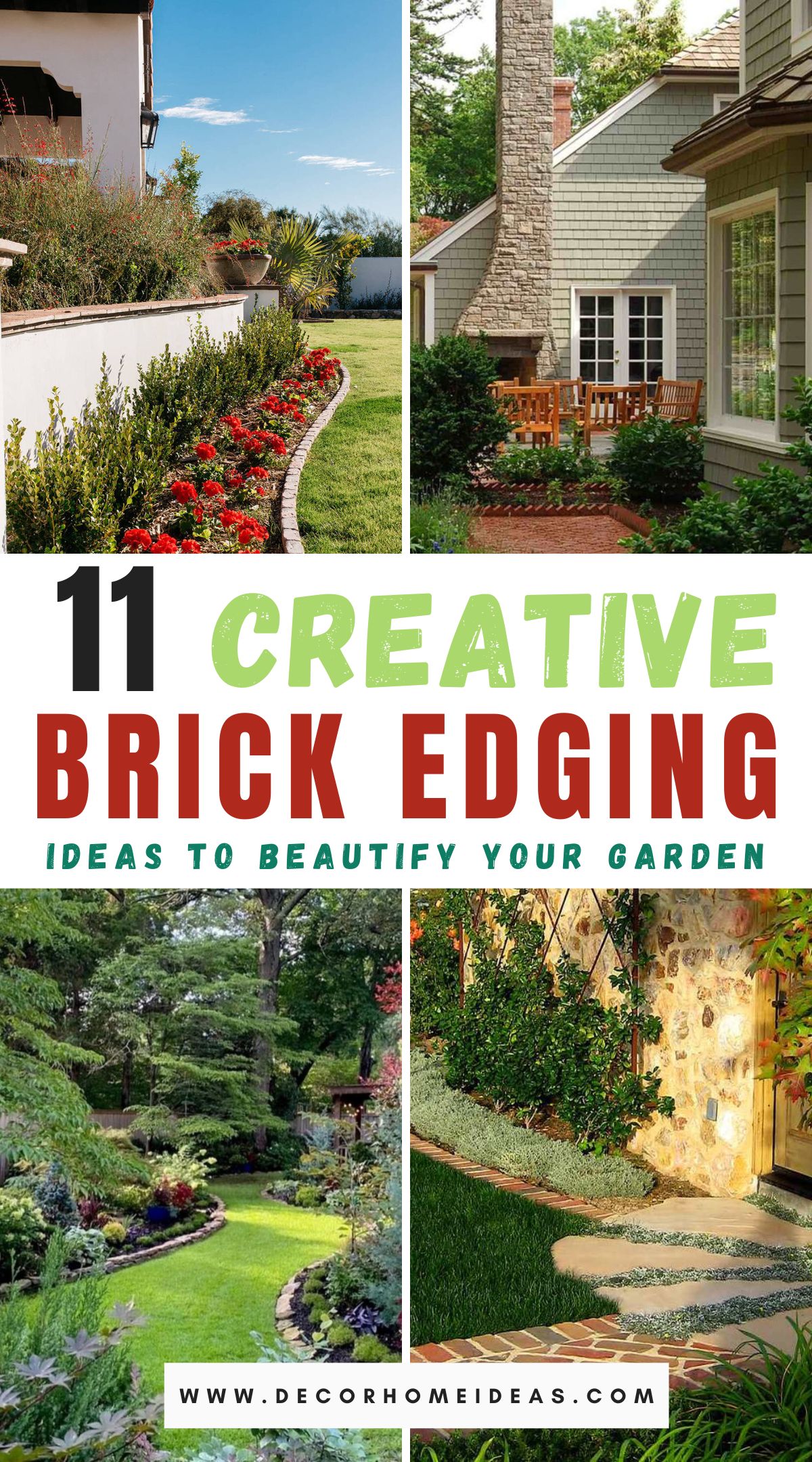
We have put together a collection of 11 Stunning Ways to Enhance Your Garden With Brick Edging that can inspire your new garden DIY project.
1. Clay Brick Edging
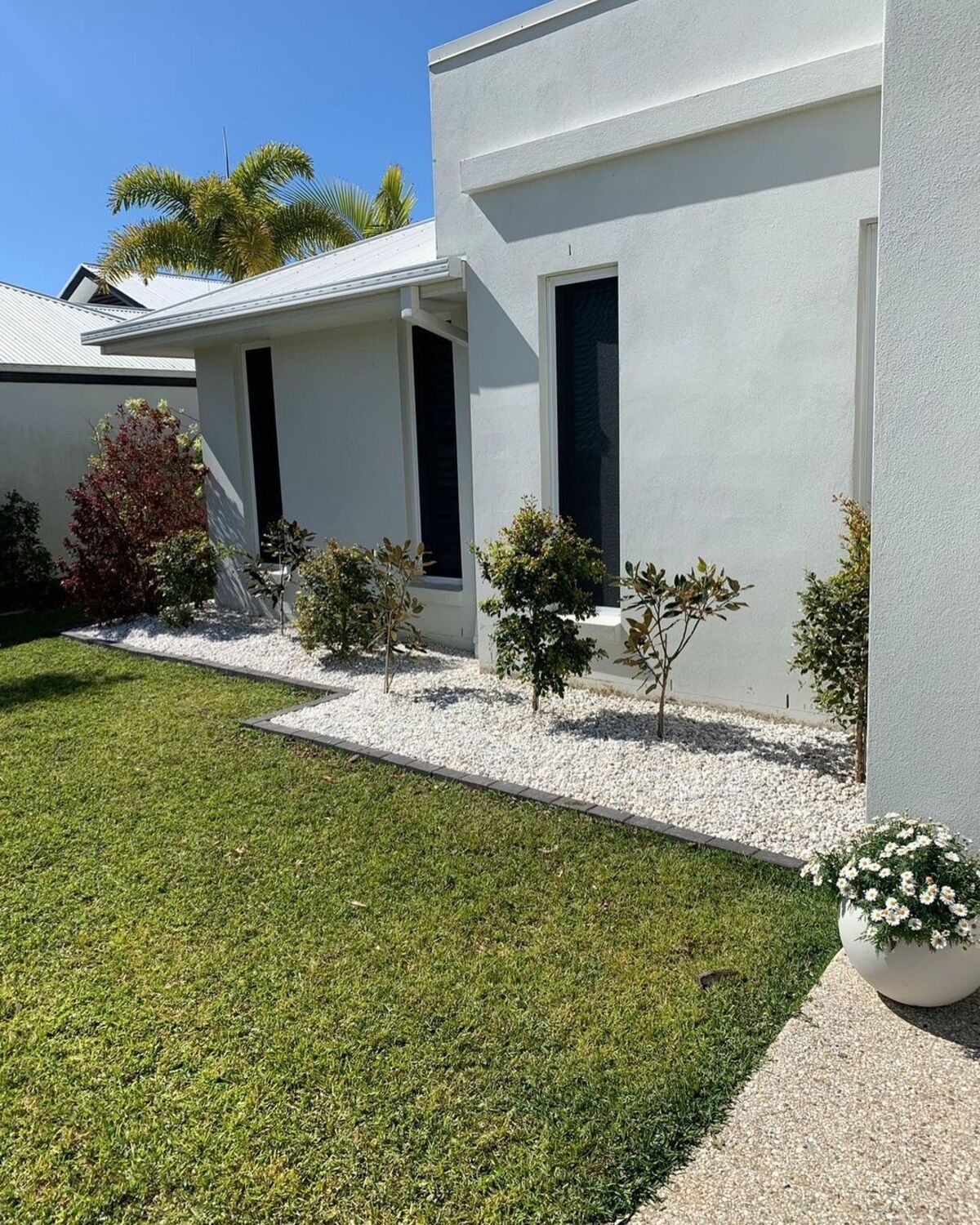
Clay bricks are an alternative to traditional bricks you can get from any hardware store.
People tend to choose this type of brick when they need a color other than the typical red brick shade.
In this garden edging idea, the brick edging frames a rock garden covered with white pebbles. The edge is slightly above the garden level to keep the pebbles in place.
2. Traditional Brick Edging
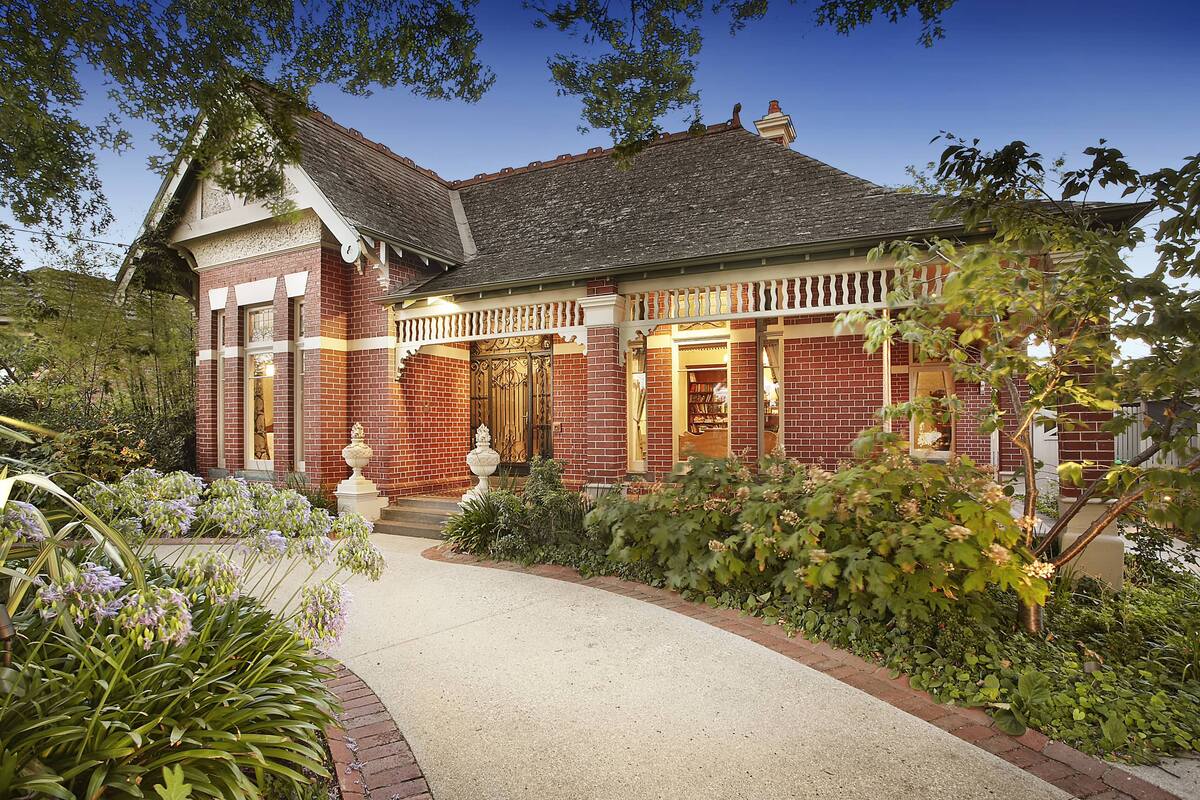
@Bagnato Architecture Interiors
To level the brick edging with the garden and the walkway, you need to dig a trench where the bricks will be laid.
The flush result is appealing as it unites the walkway with the garden.
3. Raised Brick Edge
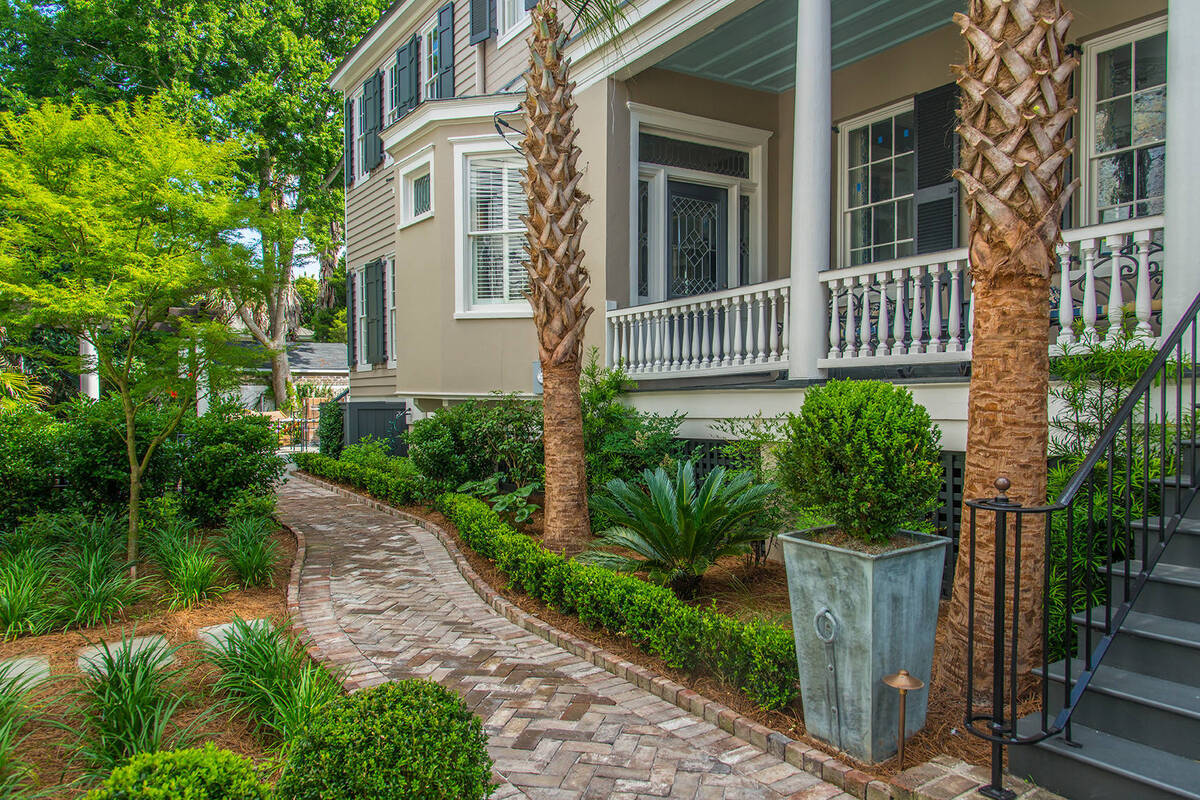
You can put the bricks vertically in a trench and leave half of them peeking out of the ground to form a retaining edging.
This brick alignment is needed when the garden is a level up from the adjacent walkway.
4. Diagonal Brick Edging
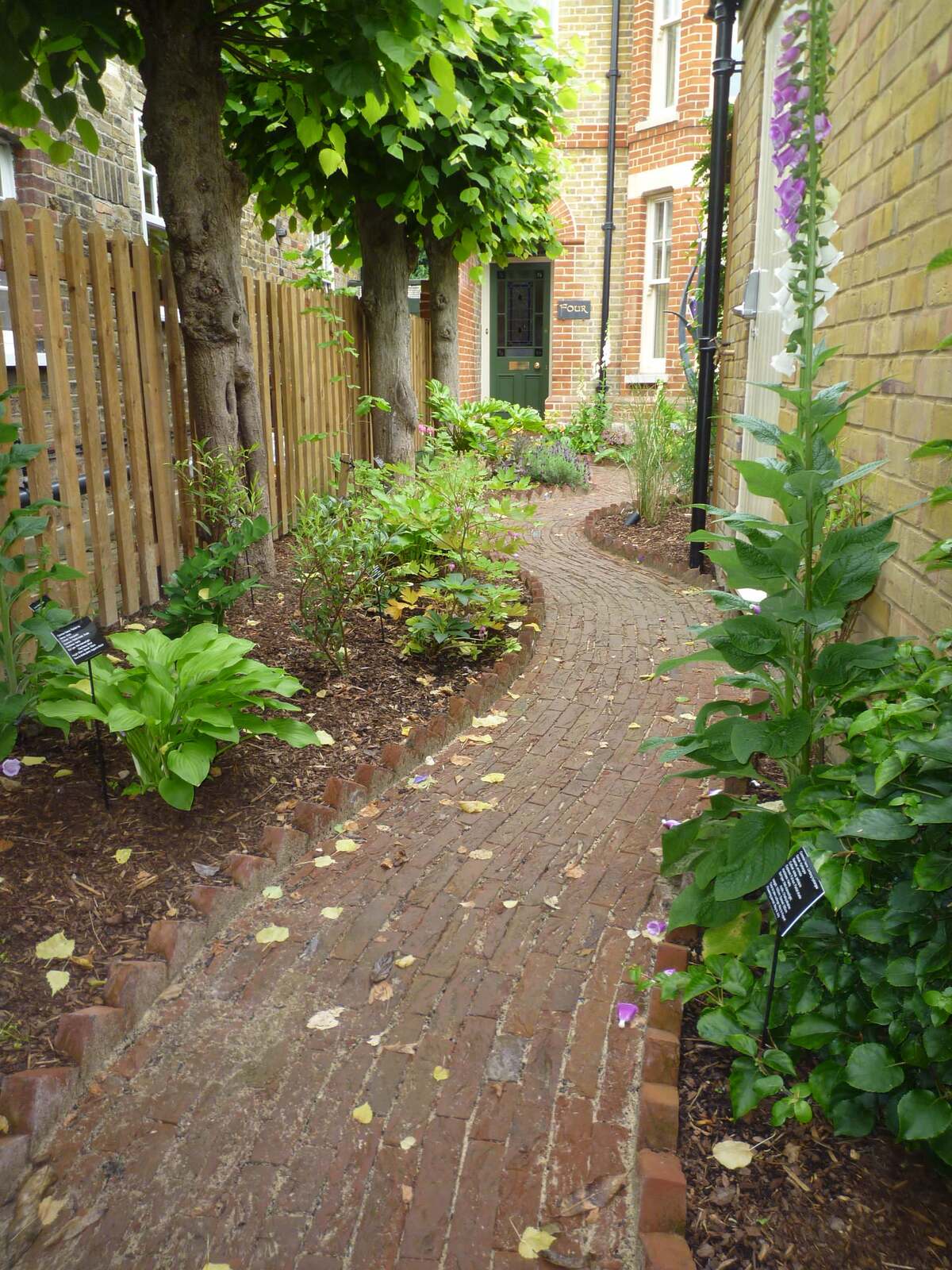
@Aralia: Innovation in Landscape Design
This alignment pattern of traditional bricks is perfect for a cottage garden border. The bricks are rotated diagonally, with their edges looking up, to create a domino effect.
For this garden edge idea, you can use old and broken bricks. First, dig a trench in the soil and then lean the bricks tightly next to each other.
Grout them with soil and spray water over the edging to fix it.
5. Cobblestone Garden Edging
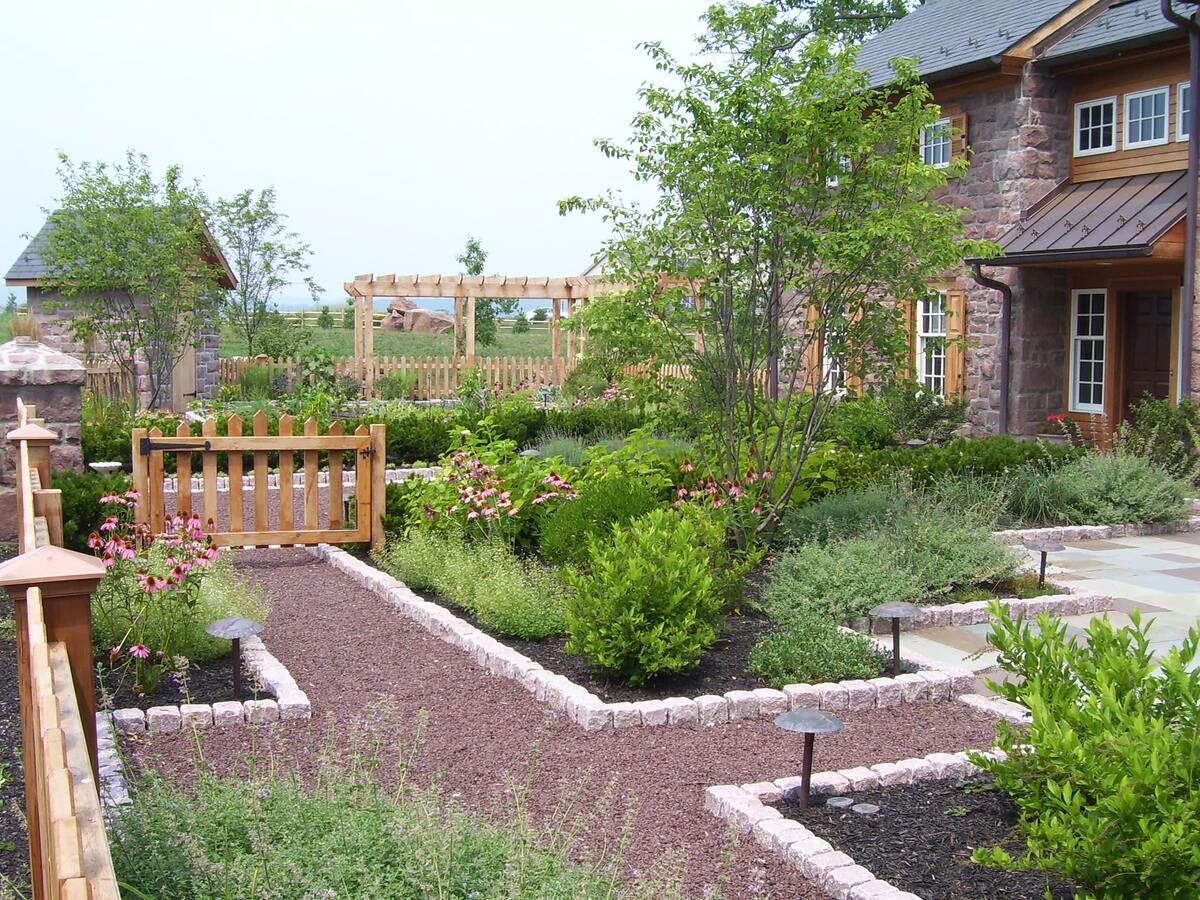
The perfect garden edging for such an updated farmhouse is made from bricks or cobblestones.
These two materials are old-dated yet transitional when mixing them with more modern textures like gravel.
6. Two Patterns Of Paver Edging
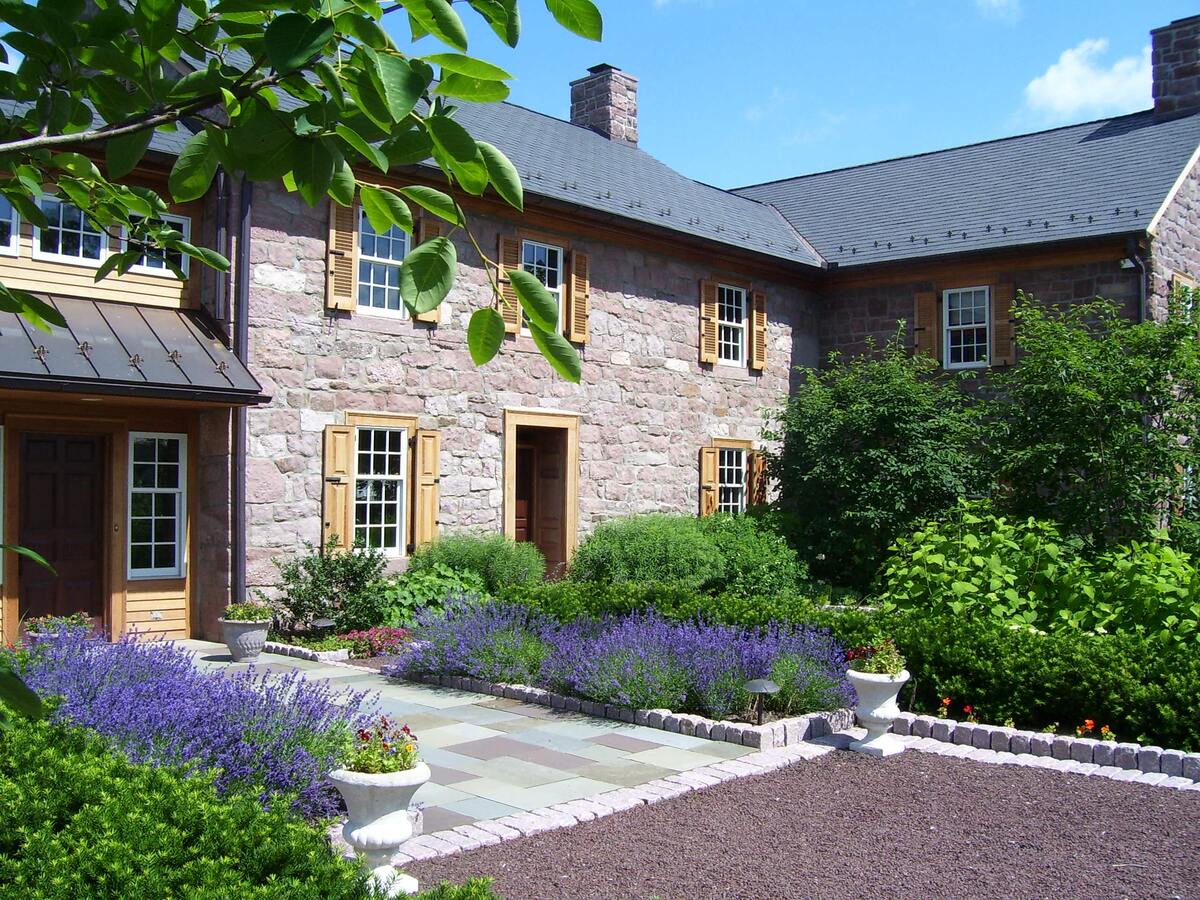
To create visual interest in the garden bed edging, align the bricks in two patterns. Put the bricks vertically along the garden beds, creating a raised border to retain the soil.
For the brick edging on the walkway or patio, place the bricks horizontally on the ground, leaving them only slightly over the walkway level.
The alignment patterns of the borders, although made with identical materials, will visually differentiate the zones.
7. Raised Brick Edging For a Neat Garden Look
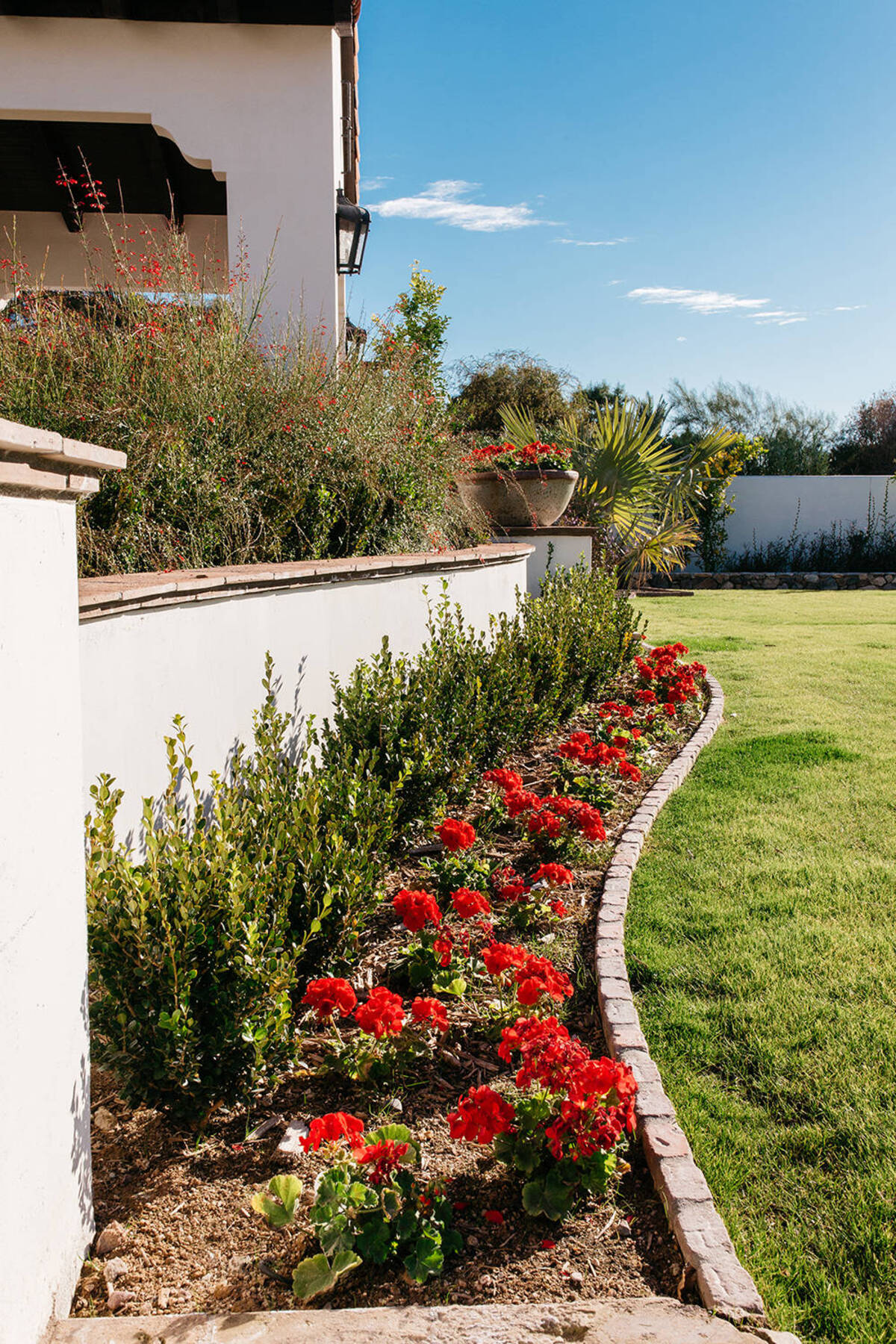
If you prefer a garden with neat edges, go for a raised brick border that will keep the garden bed contained in its place.
As you can see from the image, the grout between the bricks is cement to ensure the rigidness of the border for a very long time.
8. Stone Edging
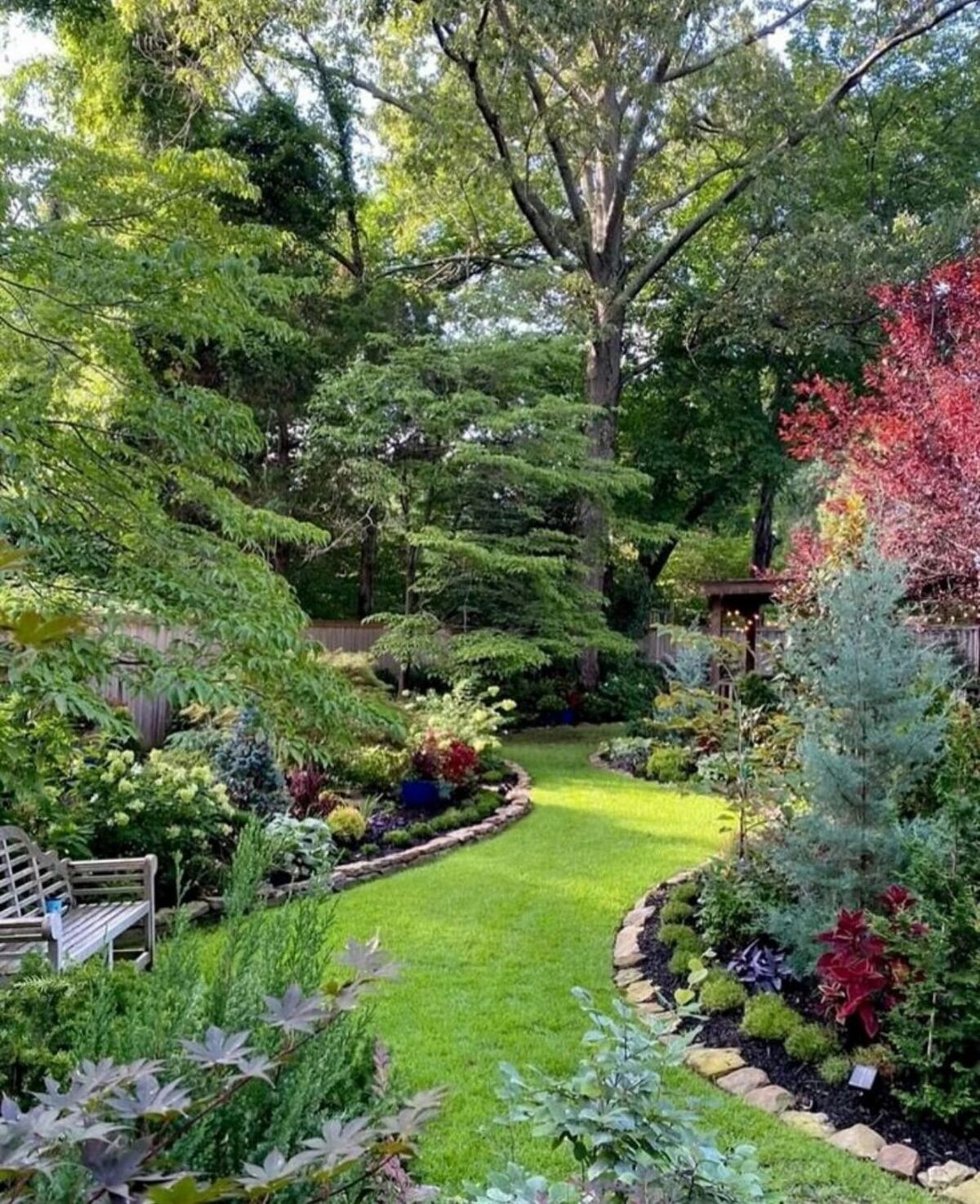
Stone edging is another inspiring garden edge idea that can give visual interest and a sophisticated finish to the garden beds.
Stones are taken from nature, making each one unique in shape and texture.
Stone borders are suitable for cottage, rock, and mulch gardens, where they can complement plant diversity.
9. Brick Edging With White Grout Gaps
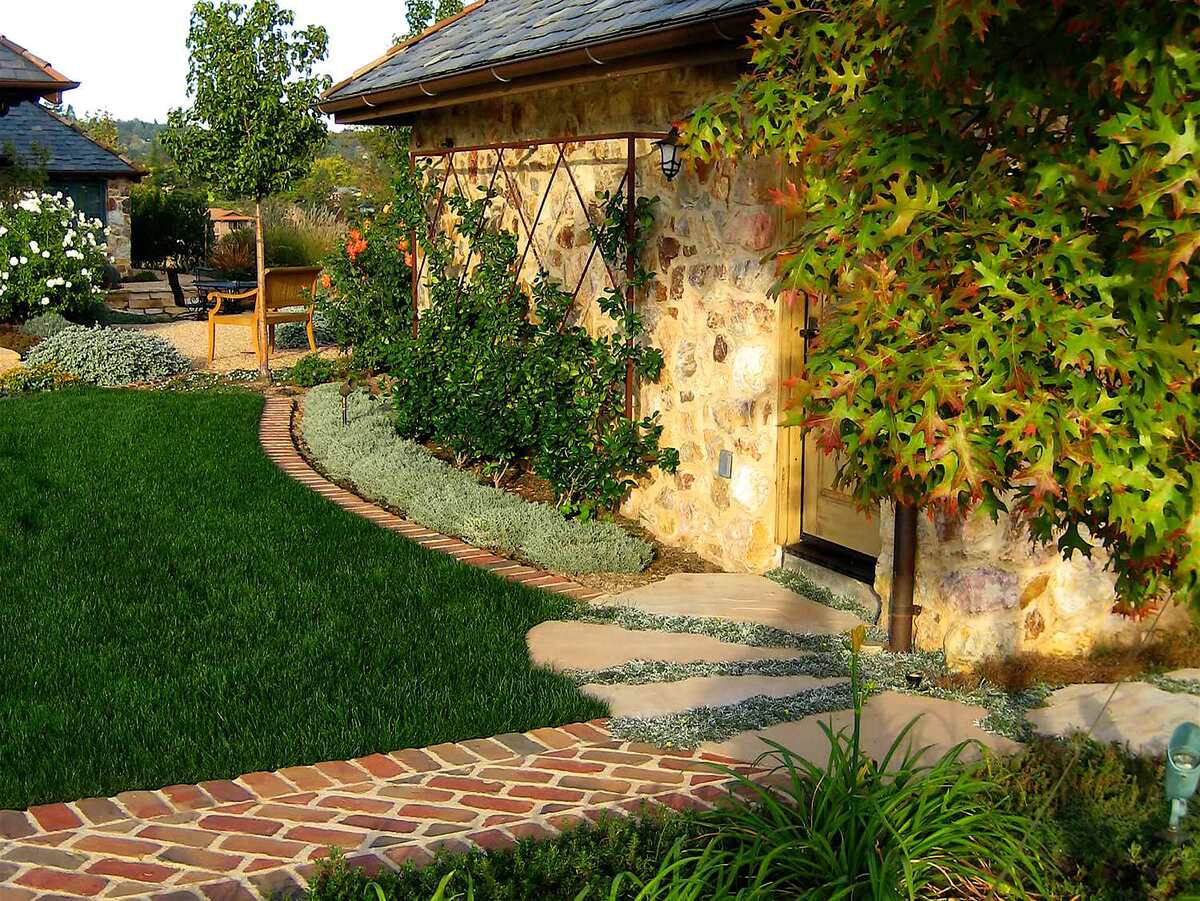
The brick edging of the side garden is made to complement the walkway through the lawn that is situated closely.
The beautiful rusty red color of the bricks stands out against the green carpet.
The white grouting creates a lovely contrast and enhances the rustic look of the brick features.
10. Stone Brick Edging
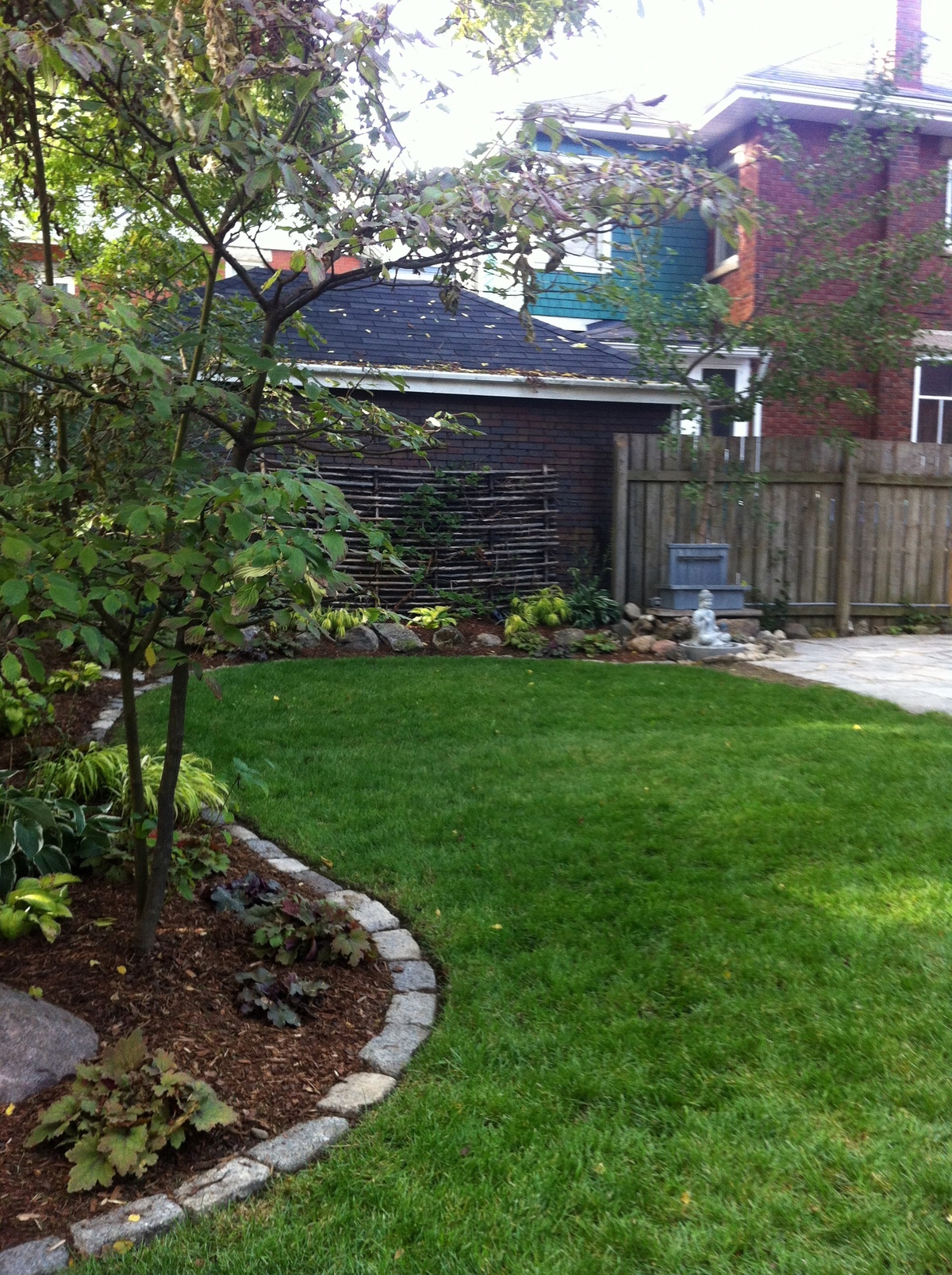
This photo is called “Backyard Bliss,” and it is the perfect description of this well-maintained and appealing outdoor area.
The green carpet is interrupted by a curved garden bed edged with a stone brick border.
The addition of large natural stones, a Buddha statue, and bamboo decorations is inspired by the Asian gardens where relaxation and positivism rule.
11. Brick Edging With Brick Walkways
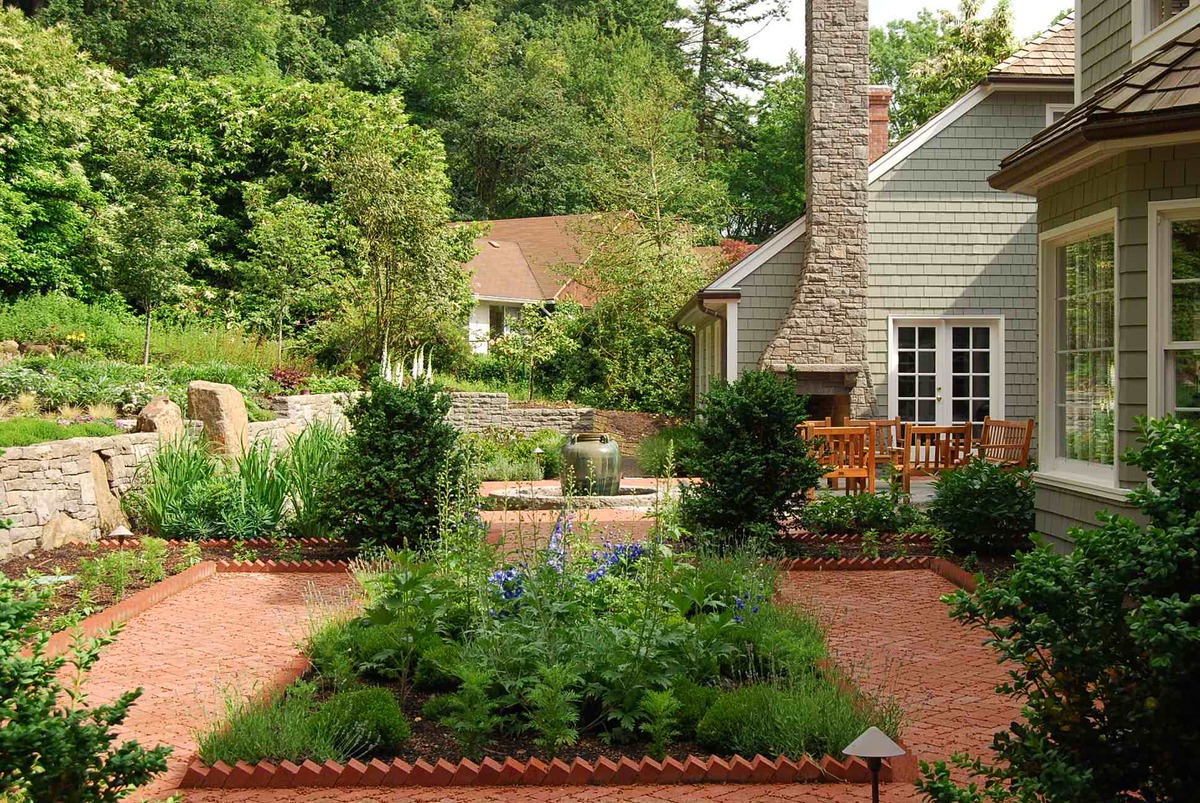
@Samuel H. Williamson Associates
This garden bed is in the middle of an outdoor area covered with traditional red bricks. They are aligned in a zig-zag pattern that creates visual interest.
The garden beds are separated from the walkways with borders from bricks placed diagonally in the ground.
Despite the identical building material, this alignment defines the edging as a separate structure.

